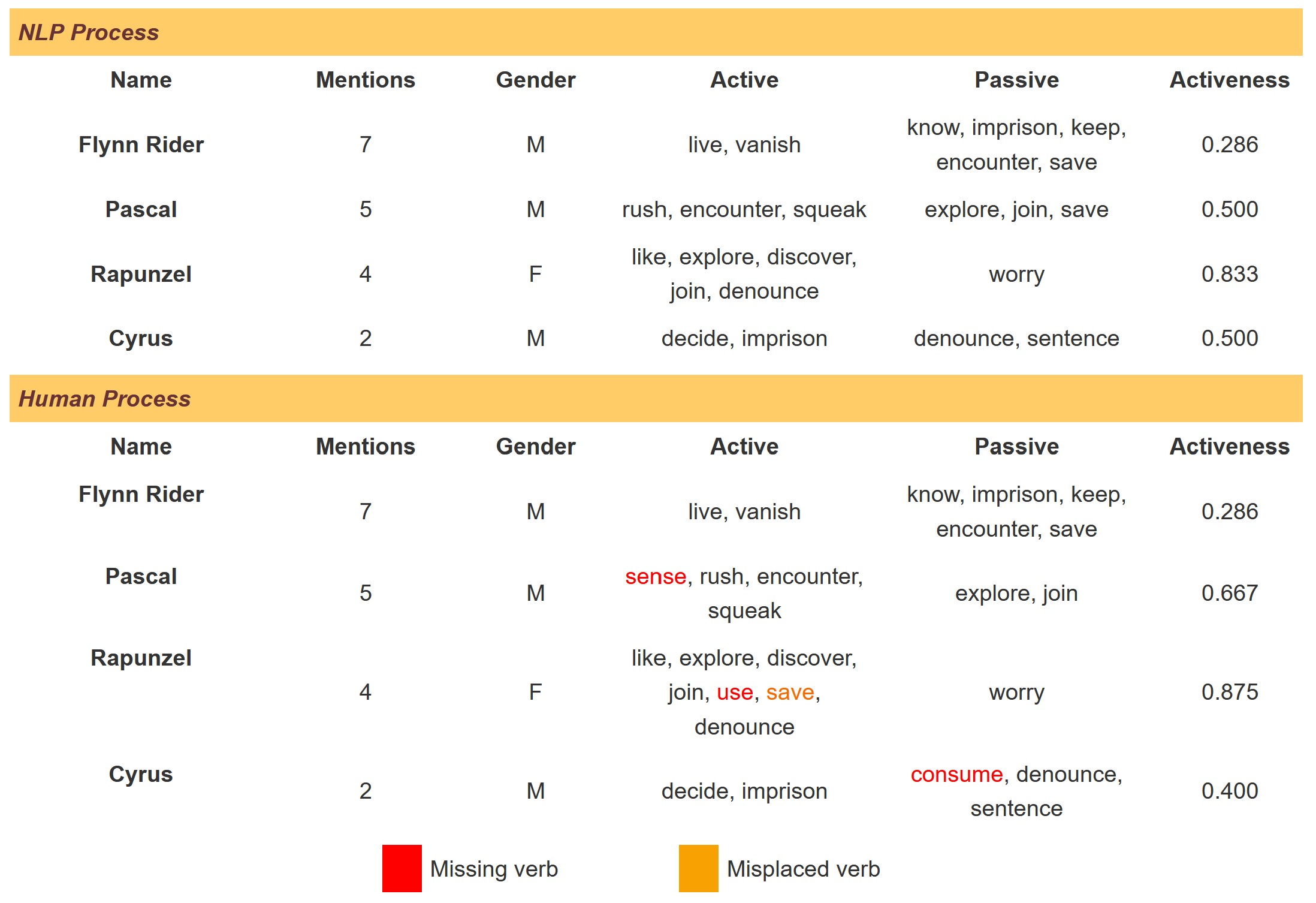📊 Data Analysis
Are female characters as essential to plotlines as male characters?
Previously, we noticed that the fraction of female characters in movie metadata is much smaller compared to the fraction of male characters. Even though there seems to be an increase of the fraction of female characters between the 70s and 2010, this fraction was still around 35% in 2010 which is far from parity. Therefore, we wished to analyze if this difference is also present in the movie summaries. Indeed, a character may be present in the list of all characters of a movie, however it does not mean that the character is also mentioned in the summary of the movie as it could just be the housekeeper which appears only once in the movie and is not important for the story. Indeed, one can assume that the characters mentioned in the summaries are quite important for the story and have a certain contribution to its development and especially the ones mentioned several times.
As we can observe below, the fraction of mentions of characters in the summaries is around 35%. This value is very similar to the one computed in the CMU character metadata. Thus, it confirms that female characters are underrepresented and seem to have overall less importance compared to men. In addition, no statistically significant evolution has occurred between the 40s and 2010. In fact, the calculated fraction has remained relatively constant.
In order to analyze the activeness of the characters, we extracted all the verbs related to them and defined if the action was done by the character (active) or done to them (passive). At first glance of the graph, one might think that the men are more often described as doing things, e.g using the active voice. Indeed, the difference in activeness score among male and female characters is always positive through the years. However, the magnitude of this difference is very small (around 3-5%).
Secondly, across the years, a decrease in activeness of male characters seems to appear. There is a statistical significant difference but its effect is very small, almost negligible.
By only doing this naive analysis, one might think that our initial hypothesis is incorrect. Indeed, this value seems to indicate that women and men in movies are portrayed to do active actions equally. However, it is important to realize that not all actions are equivalent. For example the two following sentences are both in the active voice, but have completely different level of “activeness” for the associated characters:
“Sophie fell in love with him at first sight.” or “Mark rushed to her rescue.”
What do male and female characters actually do?
As mentioned above, the context and underlying meaning of verbs is crucial to investigate the portrayal of characters. However our NLP pipeline does not keep the context of each verb. Therefore, it is impossible using computational methods to identify interesting clusters in the top occurring verbs without the context. Upon further analysis of the most frequent verbs, we identified three meaningful clusters. Indeed, it appears that a lot of the verbs are linked to violent actions, romantic relationships, and powerful actions. Moreover, these clusters are particularly meaningful as the propensity of each is different for female and male characters.
Once these clusters were obtained, we counted the number of verbs and gave a score to each verb based on its number of occurrences. The higher its occurrences, the higher the score.
| Clustering of active actions of movie characters |
|
Clustering of passive actions of movie characters |
| Cluster |
# verbs |
score |
|
Cluster |
# verbs |
score |
|
Cluster |
# verbs |
score |
|
Cluster |
# verbs |
score |
| Violence |
10 |
468 |
|
Violence |
7 |
291 |
|
Violence |
30 |
1527 |
|
Violence |
27 |
1293 |
| Love |
3 |
136 |
|
Love |
6 |
323 |
|
Love |
6 |
140 |
|
Love |
7 |
338 |
| Power |
15 |
732 |
|
Power |
10 |
534 |
|
Power |
17 |
935 |
|
Power |
16 |
791 |
| Male |
|
Female |
|
Male |
|
Female |
We can see that the stereotypical gender behaviour are indeed also present in the summaries. In fact, men have a high score in violence and power whereas women have a high score in love. Interestingly women have a relatively low score in violence in the active actions, female characters receive a lot of violence in the passive form. This is certainly due to the fact that in many plotlines women are victims of the violence and not the offenders. Here is a sample of our clusters:

